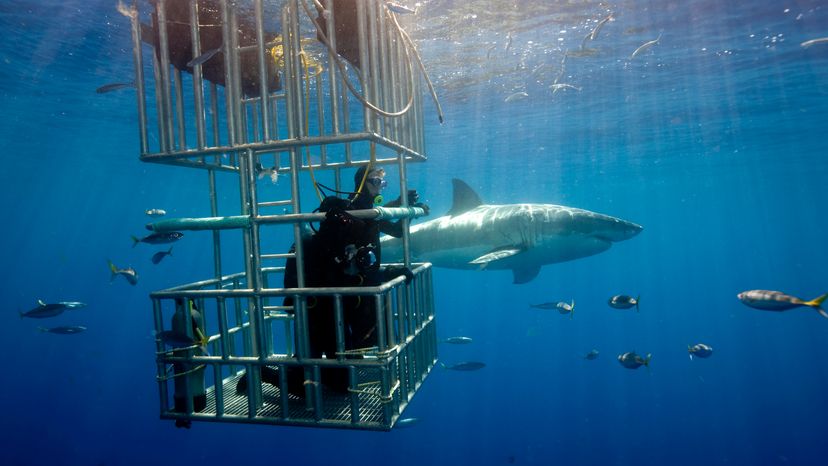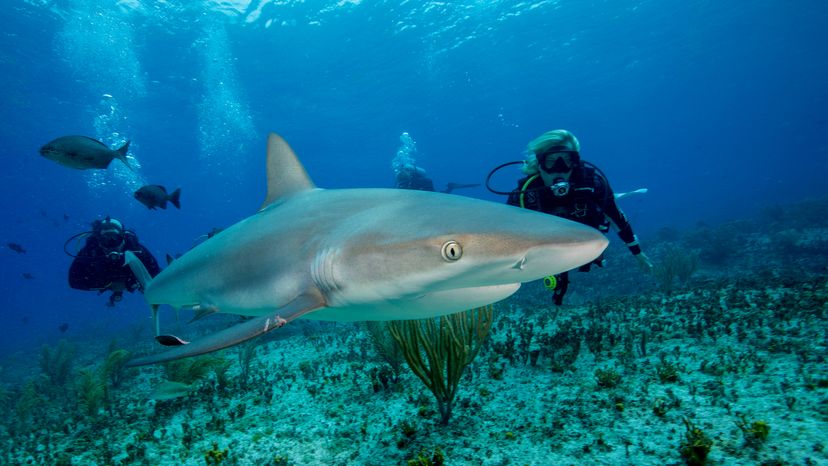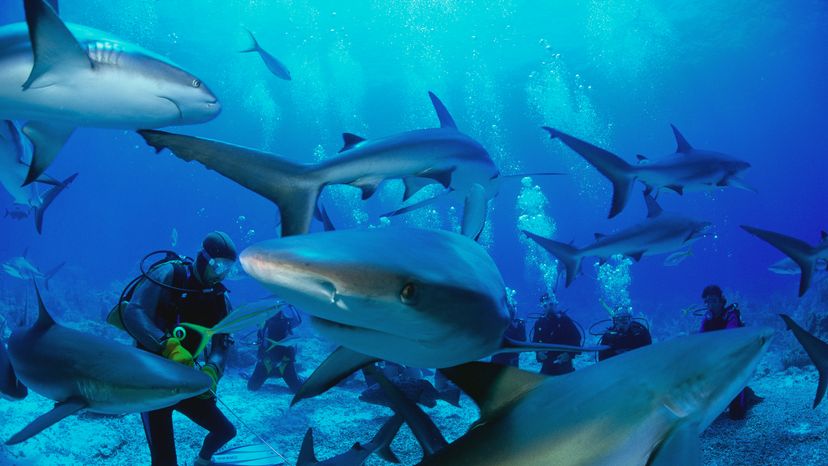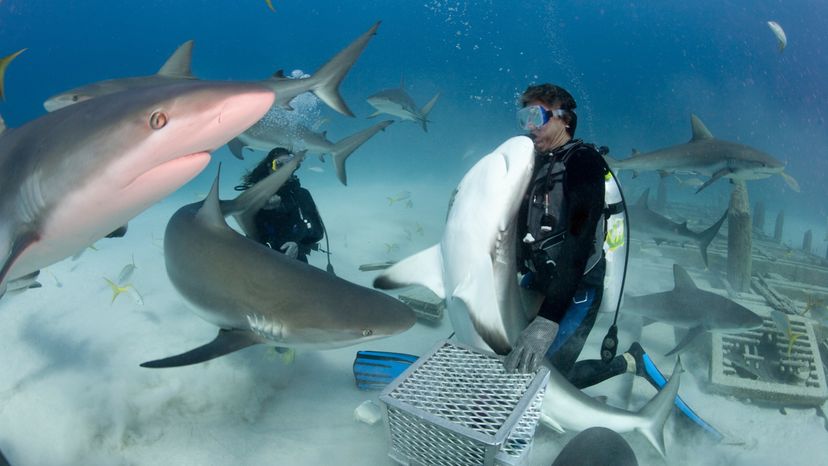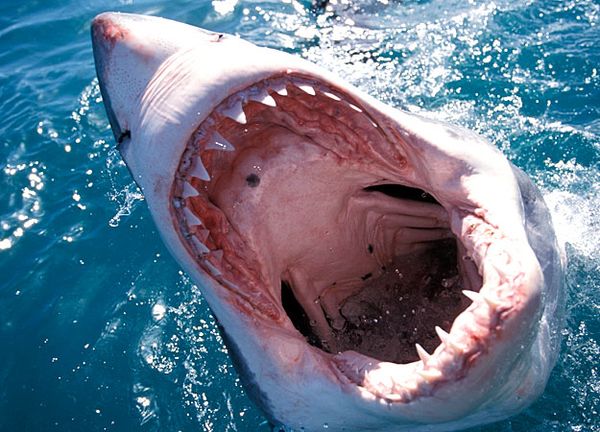You can't hear a lot 60 feet (18 meters) below the surface of the ocean -- maybe just your own breathing into the scuba gear or the escape of air bubbles as they rush to the surface. You can feel your heart beating slowly as you watch fish glide past peacefully. You have let your guard down, you are relaxed and enjoying the sensation of the weight of the ocean above and around you, and the slow flow of the current deep beneath the surface.
Then, out of the corner of your eye, you see a large shadow slide its way through the depths. The light down here is tricky, but there's definitely something large circling you and the other divers. You catch sight of it again, but it has multiplied into two shapes, now three. You notice that the fish that were so calming have beat a hasty exit; it's now just you, the other divers and the looming shadows circling ever closer.
Advertisement
The shapes materialize. Five blacktip reef sharks swim into your view, and your heartbeat, so calm only a moment ago, is raging in your ears as the sharks slowly weave themselves among your group of divers. Their movement is smooth and fluid, so you know they are at ease with you and the other humans, and they seem curious about these visitors to their home.
You are diving with sharks, an activity that's quickly becoming popular with more than just the thrill seekers. In fact, diving with sharks has become a massive business around the world. For example, in South Africa, a prime shark-diving spot, the country earns about $30 million a year from tourists looking to see sharks up close [source: CNN News].
In the following pages, we'll see the different ways you can dive with sharks, what sorts of sharks you might find and the dangers that come along with submerging yourself with these predators of the deep. Read on to find out about most popular way to dive with sharks: cage diving.
Advertisement

